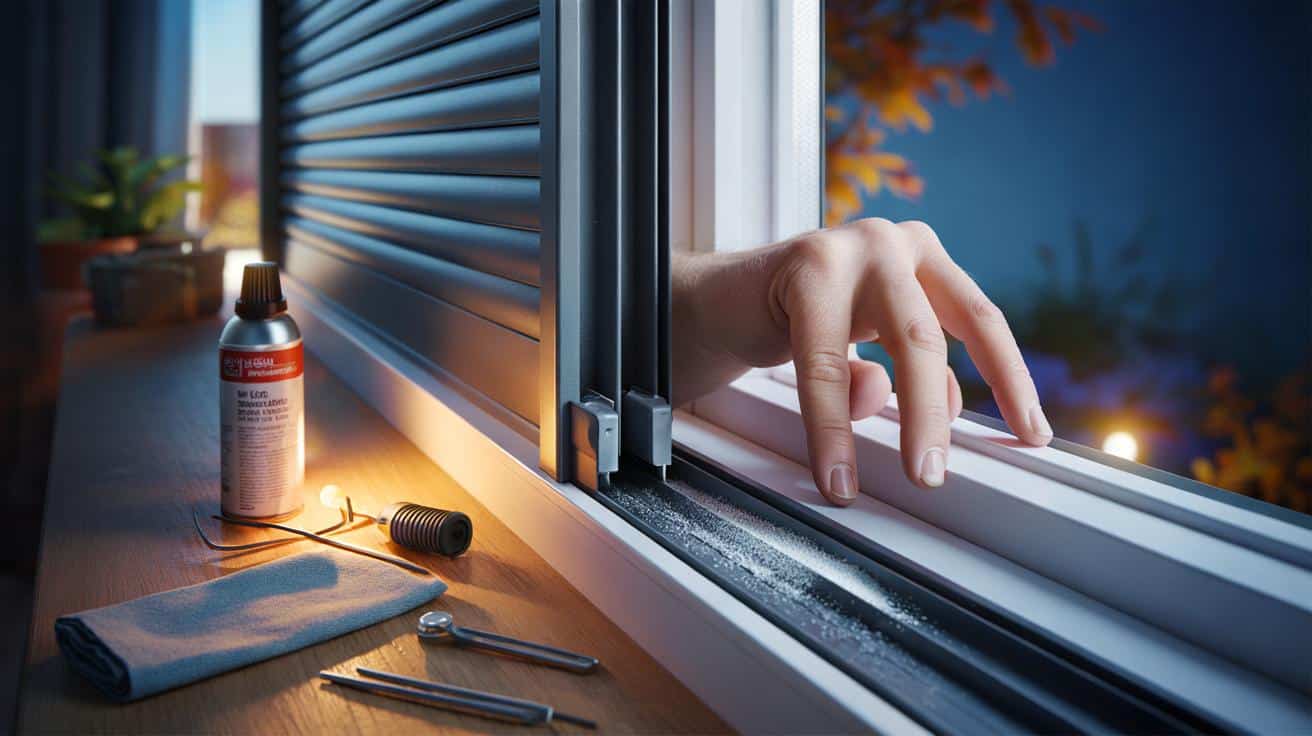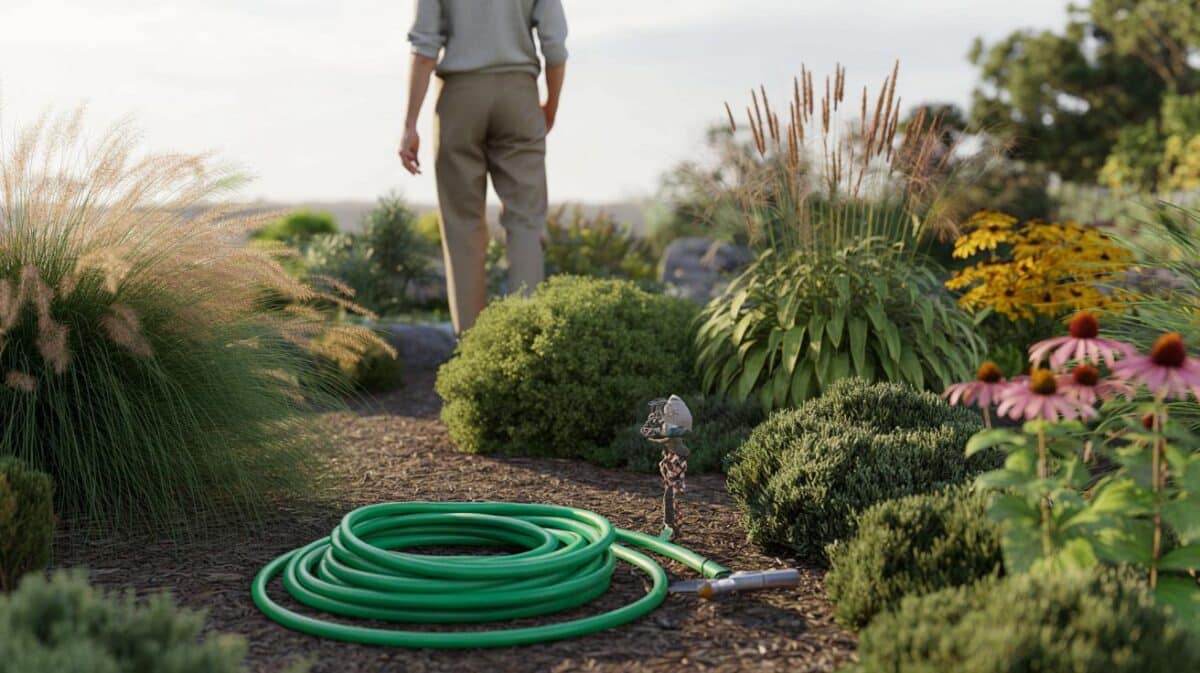Creaks, stalls and skewed drops unsettle the calm.
You tug the strap or tap the switch and the curtain lurches, drops on one side and groans. The season rewards a tight seal at night. A crooked shutter leaks warmth, strains parts and dents patience. The good news sits close at hand: a careful reset, a soft touch and a few checks restore smooth travel without dismantling the headbox.
Why shutters misbehave when the weather turns
Autumn brings grit on sills, damp in tracks and stiffer movement. Small particles gather in the side channels and lift a slat. A single misfed slat tilts the whole curtain and drags the pack out of square. Loose top attachments let one side rise or fall ahead of the other. On older units, bent guides or tired end stops add to the skew.
Spot the tell-tale signs in under a minute
- One bottom corner sits lower than the other by a few millimetres or more.
- The curtain “bites” into one channel or leaves a gap on the opposite side.
- A clap or click as movement starts, then resistance or a stall.
- Motor units slow, hum longer than usual or stop short of the top or bottom.
A visible skew of even 1 cm signals a curtain out of its channel or a loose top fixing. Stop, reset, and you often prevent damage.
The three-minute, £0 reset that saves a call-out
You rarely need to strip the box. Most households can realign a curtain with calm hands and a standard screwdriver. Work gently. Keep the force low. Reset the alignment before trying repeated opens and closes.
Guide the curtain back into the side channels
Never yank a crooked curtain. A firm pull can kink a slat, tear a clip or strip a motor’s limit settings.
Check and centre the top attachments
The trouble may sit at the axle, where the curtain fixes to the roller. Loose or offset clips shift weight to one side and twist the pack.
- Cut power at the fused spur for motorised shutters. Safety first.
- Open the headbox carefully. Note the position of each attachment strap or clip.
- Refit any clip that has walked out of its slot. Tighten loose screws by a quarter turn.
- Space the attachments evenly across the width so load shares straight.
- Restore power and test. Adjust the motor limits if travel stops too early or too late.
Power off before opening any headbox. Treat the rolled curtain like a spring under tension.
Clean tracks, calmer mornings: the habits that pay off
A few light tasks each month keep friction low and alignment true. Dirt lifts slats; dryness squeaks; play in fixings grows if ignored. Short routines beat costly repairs.
- Vacuum the side channels to remove dust, grit and tiny stones.
- Wipe slats with a damp, non-abrasive cloth. Dry with a soft towel.
- Apply a sparing mist of silicone spray in the channels. Avoid oil that gums up.
- Check each top clip for movement. Tighten lightly if any play appears.
- Listen for new noises on the first lift of the day. New sounds flag new friction.
Quick diagnosis at a glance
| Symptom | Likely cause | Quick action |
|---|---|---|
| One side drops faster | Curtain edge out of channel | Lower to resistance, guide edge back, test short cycles |
| Click then stall | Loose top attachment | Power off, open box, refit or tighten clips |
| Rough scraping noise | Grit in channels, warped guide | Vacuum, silicone spray; if still rough, check guide alignment |
| Stops early, every time | Limit settings drifted | Reset motor limits per manufacturer guide |
When to pause and get a professional eye
Some faults sit beyond a quick reset. Bent guides, damaged slats or a failing spring can worsen with use. If the curtain binds hard, if slats kink, or if the motor trips the breaker, stop and book a visit. A check now prevents a bigger bill later.
- Severe bend or dent in a side channel: replacement section likely.
- Multiple cracked slats: new slat set or curtain segment.
- Motor runs but tube does not turn: failed drive or sheared adaptor.
- Burning smell or heat from headbox: isolate power immediately.
Costs, time and realistic expectations
A simple realignment and clean costs nothing but ten minutes. A new top clip runs only a few pounds. A replacement side channel varies by size and finish. Labour rates differ by region, with a typical one-hour call-out covering alignment, cleaning and limit checks. Keep invoices and note motor brand and model; parts supply depends on that detail.
Seasonal checks that protect comfort and bills
Shutters pull double duty in shoulder seasons. They improve thermal comfort at night and cut glare by day. Alignment keeps the seal even and reduces drafts. Pair the reset above with basic draught-proofing around frames. A few metres of compressible strip can lift comfort on the first cold snap.
Limit switch calibration: the quiet hero of smooth travel
Motorised shutters rely on end stops, or limit switches, to halt at the same points every time. If the shutter stops short or pushes too far into the box, recalibrate. The process uses two small adjusters on the motor head or a handset sequence. Small turns, test, then small turns again. Avoid large changes that overshoot.
Short cycles and small adjustments beat long, forceful runs. Correct drift early and the rest of the system stays square.
A practical example you can follow this weekend
Set aside fifteen minutes. Gather a screwdriver, a vacuum with a crevice tool, a microfibre cloth and silicone spray. Lower each shutter, check both channels, and clean. Where you see a tilt, use the guided reset. Open one headbox, inspect the attachments and nudge the spacing even. Run a full cycle. Make a note of any unit that still scrapes or drifts. That list guides deeper fixes or a service call.
Risks, trade-offs and why patience pays
Forcing movement risks kinking a slat that then snags forever. Over-lubrication attracts dust and builds paste. Over-tightening a clip can crack plastic in cold weather. Patience with small, repeatable motions protects parts and restores quiet travel. Calm steps now keep autumn evenings warmer and mornings quicker.








